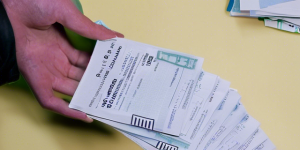
Facing the prospect of foreclosure can be an overwhelming and stressful experience. Losing your home due to mortgage debt is a situation no homeowner wants to find themselves in. However, there are steps you can take to potentially avoid foreclosure and keep a roof over your head. In this article, we’ll explore various strategies and options available to help you navigate this challenging situation.
Understanding Foreclosure
Before we delve into the strategies to avoid foreclosure, it’s essential to understand what foreclosure entails. Foreclosure is a legal process initiated by a lender or mortgage company when a homeowner fails to make their mortgage payments. The lender can seize the property and sell it at auction to recover the outstanding debt.
Foreclosure can have severe consequences, including damage to your credit score, difficulties in securing future financing, and the potential loss of equity in your home. Therefore, it’s crucial to take proactive measures to prevent foreclosure from occurring.
1. Communicate with Your Lender
The first and most crucial step in avoiding foreclosure is to communicate with your lender. As soon as you realize you’re facing financial difficulties that may impact your ability to make mortgage payments, reach out to your lender. Many lenders are willing to work with homeowners to find a mutually beneficial solution, provided you’re proactive and transparent about your situation.
By maintaining open lines of communication, you can explore various options, such as loan modifications, forbearance agreements, or repayment plans, which can help you get back on track with your mortgage payments.
2. Evaluate Your Financial Situation
Take a close look at your current financial situation and identify areas where you can potentially cut expenses or increase your income. Create a budget and prioritize your expenses, ensuring that your mortgage payment is at the top of the list. Consider taking on a part-time job, selling assets, or reducing discretionary spending to free up funds for your mortgage payments.
3. Explore Loan Modification Options
If your financial hardship is temporary, you may be eligible for a loan modification. A loan modification is a permanent change to the terms of your mortgage, such as reducing the interest rate, extending the loan term, or converting a portion of the principal balance into a non-interest-bearing balance. [Loan modifications from the U.S. Department of Housing and Urban Development (HUD)](https://www.hud.gov/topics/avoiding_foreclosure/loanmodifi cation) can provide much-needed relief and make your mortgage payments more manageable.
4. Consider Forbearance Agreements
If your financial difficulties are short-term, you may be able to negotiate a forbearance agreement with your lender. A forbearance agreement is a temporary suspension or reduction of your mortgage payments for a specific period, typically three to six months. During this time, you can work on resolving your financial issues without the threat of foreclosure looming over your head.
5. Explore Mortgage Assistance Programs
Various government and non-profit organizations offer mortgage assistance programs designed to help struggling homeowners avoid foreclosure. These programs may provide temporary financial assistance, counseling, or legal aid. Some popular programs include the Making Home Affordable program and the Hardest Hit Fund from the U.S. Department of the Treasury.
6. Seek Guidance from Housing Counselors
Housing counselors are professionals who can provide valuable guidance and advice on navigating the foreclosure process. They can help you understand your rights and options, negotiate with lenders, and explore various assistance programs. Organizations like NeighborWorks America and the National Foundation for Credit Counseling offer free or low-cost housing counseling services.
7. Explore Refinancing Options
If your financial situation is stable, but you’re struggling with your current mortgage payments, refinancing your mortgage may be an option. Refinancing involves replacing your existing mortgage with a new loan, ideally with better terms, such as a lower interest rate or extended repayment period. This can potentially lower your monthly payments and make them more manageable.
8. Consider Selling Your Home
While it may not be an ideal solution, selling your home can be a viable option to avoid foreclosure. If you have equity in your home, selling it can help you pay off your outstanding mortgage balance and potentially walk away with some funds to start fresh. However, it’s important to carefully evaluate the housing market and consult with a real estate professional to ensure you receive a fair price for your home.
9. Seek Legal Assistance
If you’re facing foreclosure and have exhausted all other options, it may be wise to seek legal assistance. An experienced foreclosure attorney can review your case, advise you on your rights, and potentially help you negotiate with your lender or challenge the foreclosure process in court.
10. Beware of Foreclosure Rescue Scams
Unfortunately, foreclosure situations can attract unscrupulous individuals or companies offering “foreclosure rescue” services. Be wary of any unsolicited offers or companies that require upfront fees or ask you to sign over the deed to your home. These can often be scams designed to take advantage of your vulnerable situation. Always consult with reputable housing counselors or attorneys before engaging with any foreclosure rescue services.
11. Prioritize Your Living Situation
While avoiding foreclosure should be a priority, it’s also important to consider your living situation. If your financial hardship is severe and long-term, it may be more practical to explore alternative housing options, such as renting or downsizing to a more affordable property. This can help alleviate the stress and financial burden of maintaining a home you can no longer afford.
12. Rebuild Your Finances
Regardless of the outcome, it’s crucial to take steps to rebuild your finances after facing foreclosure or financial hardship. This may involve creating a budget, reducing expenses, paying off outstanding debts, and rebuilding your credit score. Seek guidance from financial advisors or credit counselors to develop a solid plan for regaining financial stability.
13. Stay Positive and Persevere
Facing foreclosure can be emotionally and mentally draining. It’s important to stay positive and persevere through this challenging time. Surround yourself with a support system of friends, family, or professionals who can provide encouragement and guidance. Remember that foreclosure is not the end of the road, and with determination and the right strategies, you can overcome this obstacle and work towards a brighter financial future.
14. Learn from the Experience
While going through the foreclosure process is undoubtedly difficult, it can also serve as a valuable learning experience. Reflect on the circumstances that led to your financial hardship and identify areas where you can improve your financial literacy and decision-making. This knowledge can help you make more informed choices in the future and prevent similar situations from occurring.
15. Explore Alternative Housing Options
If all efforts to avoid foreclosure have been exhausted, it’s important to explore alternative housing options. This may include renting an apartment or house, staying with family or friends temporarily, or seeking assistance from local shelters or organizations. While losing your home is never easy, having a plan for your next living situation can provide a sense of stability and security.
Conclusion
Facing foreclosure due to mortgage debt can be an overwhelming and stressful experience, but it’s important to remember that you have options. By taking proactive steps, communicating with your lender, exploring assistance programs, and seeking guidance from professionals, you can increase your chances of avoiding foreclosure and protecting your home. Remember, foreclosure is not the end of the road, and with perseverance and the right strategies, you can overcome this challenge and work towards a brighter financial future.
FAQs
1. What is the first step I should take if I’m struggling to make my mortgage payments? The first step should be to communicate openly and honestly with your lender. Lenders are often willing to work with homeowners who are proactive and transparent about their financial situation. By reaching out early, you can explore various options and solutions before falling too far behind on your payments.
2. Can a loan modification really help me avoid foreclosure? Yes, a loan modification can be an effective way to avoid foreclosure. By modifying the terms of your mortgage, such as reducing the interest rate, extending the loan term, or converting a portion of the principal balance into a non-interest-bearing balance, your monthly payments can become more manageable and affordable.
3. What if my financial hardship is only temporary? Can I still avoid foreclosure? If your financial hardship is temporary, you may be able to negotiate a forbearance agreement with your lender. This allows you to temporarily suspend or reduce your mortgage payments for a specific period, typically three to six months, giving you time to get back on your feet without the threat of foreclosure.
4. Are there any government programs that can help me avoid foreclosure? Yes, there are various government and non-profit organizations that offer mortgage assistance programs designed to help struggling homeowners avoid foreclosure. Some popular programs include the Making Home Affordable program and the Hardest Hit Fund from the U.S. Department of the Treasury.
5. If I can’t avoid foreclosure, what options do I have for alternative housing? If you have exhausted all efforts to avoid foreclosure, you may need to explore alternative housing options. This could include renting an apartment or house, staying with family or friends temporarily, or seeking assistance from local shelters or organizations. While losing your home is never easy, having a plan for your next living situation can provide a sense of stability and security.
]]>
When you’re struggling with debt, negotiating a settlement with your creditors can be a viable option to get your finances back on track. However, navigating the debt settlement process can be challenging, and it’s essential to approach it with a well-informed strategy. In this article, we’ll explore practical tips to help you negotiate debt settlement with creditors effectively.
Understanding Tips for Negotiating Debt Settlement with Creditors 2024
Before we dive into the negotiation tips, let’s first understand what debt settlement entails. Debt settlement is a process where you negotiate with your creditors to pay a lump sum amount that is less than the total amount you owe. In exchange, the creditor agrees to consider the remaining balance as settled and forgiven.
It’s important to note that debt settlement should be considered a last resort option, as it can have a significant impact on your credit score and may result in tax implications for the forgiven debt amount.
1. Assess Your Financial Situation

The first step in negotiating debt settlement is to assess your financial situation thoroughly. Gather all the necessary information, including the total amount of debt you owe, the interest rates, and the creditors involved. This will help you determine your negotiation strategy and set realistic expectations.
2. Prioritize Your Debts
Not all debts are created equal. Prioritize your debts based on their urgency and potential consequences. For example, secured debts like mortgages or car loans should take precedence over unsecured debts like credit cards or personal loans. This will help you allocate your resources effectively and focus on the debts that pose the greatest risk.
3. Understand Your Rights
Familiarize yourself with the Fair Debt Collection Practices Act (FDCPA) and your rights as a consumer. This federal law prohibits debt collectors from engaging in abusive, deceptive, or unfair practices. Knowing your rights will empower you during the negotiation process and prevent you from being taken advantage of.
4. Gather Supporting Documentation
Before reaching out to your creditors, gather all relevant documentation that supports your financial hardship. This may include proof of income, medical bills, job loss or reduction in income, or any other extenuating circumstances that have contributed to your inability to pay your debts. Having this documentation ready will strengthen your case and increase your chances of a successful negotiation.
5. Communicate with Creditors

Once you have all the necessary information and documentation, it’s time to reach out to your creditors. Explain your situation clearly and express your willingness to negotiate a settlement. Be prepared to provide detailed information about your financial circumstances and the reasons for your inability to pay the full amount.
6. Make a Reasonable Offer
When negotiating with creditors, it’s essential to make a reasonable offer. Research industry standards and typical settlement percentages to ensure your offer is within an acceptable range. A common practice is to offer between 20% and 50% of the outstanding balance as a lump sum payment.
7. Get the Agreement in Writing
If a creditor agrees to a settlement, ensure that the terms are clearly outlined in writing. This document should include the agreed-upon settlement amount, the payment timeline, and a statement that the remaining balance will be forgiven upon successful payment. Having a written agreement will protect you and serve as evidence should any disputes arise in the future.
8. Stick to the Agreement
Once you’ve reached an agreement with a creditor, it’s crucial to stick to the terms. Make timely payments as agreed upon, and keep open communication with the creditor throughout the process. Failing to adhere to the agreement may result in the creditor reversing the settlement and pursuing the full outstanding balance.
9. Negotiate with Multiple Creditors
If you have multiple debts, it’s essential to negotiate with each creditor individually. Each creditor may have different guidelines and policies regarding debt settlement, and it’s crucial to tailor your approach accordingly.
10. Consider Professional Assistance
Debt settlement can be a complex process, and in some cases, it may be beneficial to seek professional assistance. Credit counseling agencies or experienced attorneys specializing in debt settlement can provide valuable guidance and represent you in negotiations with creditors.
11. Be Persistent and Patient
Negotiating debt settlement can be a lengthy and challenging process. It’s essential to be persistent and patient throughout the negotiations. Creditors may initially reject your offer or propose counteroffers. Be prepared to counter and continue negotiating until you reach a mutually acceptable agreement.
12. Protect Your Credit Score
While debt settlement can provide relief from overwhelming debt, it’s important to be aware of the potential impact on your credit score. Settled debts are typically reported to credit bureaus as “settled for less than the full amount,” which can negatively affect your credit score. However, the impact may be less severe than the consequences of continued missed payments or defaulting on the debt.
13. Explore Alternatives
If debt settlement is not a viable option for your situation, explore other alternatives such as debt consolidation, debt management plans, or bankruptcy. Each option has its own pros and cons, and it’s essential to weigh them carefully based on your individual circumstances.
14. Rebuild Your Financial Future
Once you’ve successfully negotiated debt settlement, it’s time to rebuild your financial future. Develop a budget, reduce expenses, and create an emergency fund to prevent future debt accumulation. Consider working with a financial advisor or credit counselor to establish healthy financial habits and repair your credit score.
15. Stay Vigilant
Even after negotiating a debt settlement, remain vigilant and monitor your credit reports regularly. Ensure that the settled debts are accurately reported and that no further collection actions are taken by the creditors. Promptly address any discrepancies or issues that may arise.
Conclusion
Negotiating debt settlement with creditors can be a viable solution for those struggling with overwhelming debt. By following these tips, you can approach the process with confidence and increase your chances of reaching a favorable agreement. Remember, open communication, persistence, and a willingness to compromise are key to successful debt settlement negotiations. With diligence and perseverance, you can regain control of your financial future.
FAQs: Tips for Negotiating Debt Settlement with Creditors 2024
1. Is debt settlement a good option for everyone? No, debt settlement is not suitable for everyone. It should be considered a last resort option, as it can have a significant impact on your credit score and may result in tax implications for the forgiven debt amount.
2. Can I negotiate debt settlement on my own, or do I need professional help? You can negotiate debt settlement on your own, but professional assistance from credit counseling agencies or experienced attorneys may be beneficial, especially if you have multiple debts or complex financial situations.
3. How long does the debt settlement process typically take? The debt settlement process can take several months to over a year, depending on the number of creditors involved, the negotiation process, and the agreed-upon repayment terms.
4. Will debt settlement affect my credit score? Yes, debt settlement can have a negative impact on your credit score, as settled debts are typically reported to credit bureaus as “settled for less than the full amount.” However, the impact may be less severe than the consequences of continued missed payments or defaulting on the debt.
5. Can creditors still pursue legal action after a debt settlement agreement? No, once a debt settlement agreement is reached and the terms are fulfilled, the creditor cannot pursue further legal action or attempt to collect the remaining balance that was forgiven as part of the settlement
]]>
As a small business owner, you’ve poured your heart, soul, and resources into making your entrepreneurial dream a reality. However, even the most well-planned ventures can encounter unforeseen challenges and financial turbulence, leaving you grappling with mounting debt. In these trying times, it’s crucial to understand that you’re not alone, and there are various debt relief programs available to help steer your business back toward calmer waters.
The Weight of Small Business Debt
Before delving into the debt relief options, let’s acknowledge the gravity of the situation. According to a report by the Federal Reserve Bank of New York, small businesses in the United States carry an average debt of $195,000, with nearly one-third owing more than $100,000. This financial burden can be crippling, hindering growth, stifling innovation, and threatening the very existence of your hard-earned enterprise.
Option 1: Small Business Debt Restructuring

One of the first steps in finding relief from overwhelming debt is to explore debt restructuring options. This process involves renegotiating the terms of your existing loans or credit agreements with lenders, potentially reducing interest rates, extending repayment periods, or restructuring the debt into more manageable installments.
Debt restructuring can be initiated through direct negotiations with your lenders or with the assistance of a third-party debt relief service. Organizations like the National Foundation for Credit Counseling (NFCC) and the Association of Independent Consumer Credit Counseling Agencies (AICCCA) offer debt management programs tailored specifically for small businesses.
Option 2: Small Business Debt Consolidation
If you’re juggling multiple debt obligations, debt consolidation may be an effective strategy to streamline your payments and potentially secure more favorable terms. This approach involves taking out a new loan or line of credit to pay off existing debts, consolidating them into a single monthly payment.
Popular debt consolidation options for small businesses include:
- Small Business Administration (SBA) loans: The SBA offers various loan programs, including the 7(a) loan program, which can be used for debt consolidation purposes.
- Business line of credit: A line of credit from a bank or alternative lender can provide access to funds for consolidating and restructuring debt.
- Debt consolidation loans: Some lenders specialize in debt consolidation loans specifically designed for small businesses.
When considering debt consolidation, carefully evaluate the terms, interest rates, and fees to ensure that the consolidated loan offers a tangible benefit over your existing debt obligations.
Option 3: Small Business Bankruptcy
In cases of severe financial distress, small business owners may need to explore the option of bankruptcy. While the prospect of bankruptcy can be daunting, it’s important to understand that it’s a legal mechanism designed to provide a fresh start and a path to financial recovery.
For small businesses, the most common types of bankruptcy are:
Chapter 7 Bankruptcy
Also known as “liquidation bankruptcy,” Chapter 7 involves the sale of non-exempt business assets to pay off creditors. Any remaining eligible debts are then discharged, providing the business owner with a clean slate. However, this process typically results in the dissolution of the business.
Chapter 11 Bankruptcy
Chapter 11 bankruptcy, also referred to as “reorganization bankruptcy,” allows the business to continue operating while restructuring its debts and reorganizing its financial affairs under the supervision of a bankruptcy court. This option is often more complex and expensive but can provide a path to continued operations for viable businesses.
It’s crucial to consult with an experienced bankruptcy attorney to understand the implications, eligibility requirements, and potential consequences of filing for small business bankruptcy.
Option 4: Alternative Lending Solutions
In recent years, alternative lending solutions have gained traction as a viable option for small businesses seeking debt relief. These lenders operate outside the traditional banking system and often offer more flexible terms and faster approval processes.
Some alternative lending solutions for small business debt relief include:
- Merchant cash advances: These short-term funding solutions provide an upfront lump sum in exchange for a percentage of future sales or revenue.
- Online business lenders: Companies like Kabbage, OnDeck, and Funding Circle offer various loan products tailored to small businesses, including debt consolidation and refinancing options.
- Crowdfunding platforms: Platforms like Kickstarter and Indiegogo allow small businesses to raise funds from a broad base of supporters, potentially alleviating debt burdens.
While alternative lending solutions can provide quick access to capital, it’s crucial to carefully evaluate the terms, fees, and repayment structures to ensure they align with your business’s financial goals and capabilities.
Option 5: Negotiating with Creditors
In some cases, directly negotiating with creditors can be an effective approach to securing more favorable repayment terms or even debt forgiveness. This strategy involves open and honest communication with your creditors, outlining your financial situation, and proposing a mutually beneficial solution.
Successful creditor negotiations often involve:
- Requesting interest rate reductions or temporary interest relief
- Negotiating for extended repayment periods or reduced monthly payments
- Exploring debt settlement options, where a lump sum is offered as partial payment of the outstanding debt
It’s important to approach these negotiations with a well-prepared plan, documented financial statements, and a willingness to compromise. Additionally, be sure to obtain any agreements in writing to avoid future misunderstandings or disputes.
Option 6: Seek Professional Guidance
Navigating the complexities of small business debt relief can be overwhelming, especially when faced with the pressures of daily operations and strategic decision-making. In such situations, seeking guidance from professionals can be invaluable.
Consider consulting with:
- Certified Public Accountants (CPAs): CPAs can provide valuable insights into your financial situation, assist with debt restructuring negotiations, and advise on tax implications.
- Business attorneys: Experienced business attorneys can guide you through the legal intricacies of debt relief options, including bankruptcy proceedings and creditor negotiations.
- Business consultants: Consulting firms specializing in small business turnarounds and debt management can offer strategic guidance and customized solutions tailored to your specific needs.
While professional guidance may come at a cost, the potential benefits of avoiding costly mistakes and securing the most favorable debt relief solution can often outweigh the upfront investment.
Option 7: Government-Backed Relief Programs
During times of economic uncertainty or widespread crises, various government-backed relief programs may become available to support small businesses. These programs can take various forms, such as loan forgiveness initiatives, tax relief measures, or direct financial assistance.
For example, during the COVID-19 pandemic, the U.S. government introduced the Paycheck Protection Program (PPP) and Economic Injury Disaster Loans (EIDL) to provide financial relief to struggling small businesses.
It’s essential to stay informed about available government-backed relief programs and actively explore eligibility requirements and application processes. Organizations like the Small Business Administration (SBA) and local business development centers can be valuable resources for accessing these programs.
Option 8: Debt Settlement Companies
For small business owners overwhelmed by the complexities of debt negotiations, debt settlement companies can provide a streamlined solution. These companies act as intermediaries, negotiating with creditors on your behalf to settle outstanding debts for a reduced lump sum payment.
While the services of debt settlement companies can be convenient, it’s crucial to exercise caution and thoroughly research their reputation, fees, and success rates. Some disreputable companies may engage in unethical practices or charge exorbitant fees, potentially exacerbating your financial situation.
When considering debt settlement companies, seek recommendations from trusted sources, read reviews, and carefully review the terms and conditions before engaging their services.
Option 9: Asset Liquidation or Downsizing
In cases where debt relief is paramount, small business owners may need to explore the option of liquidating non-essential assets or downsizing operations. This approach involves selling off underutilized or non-core assets, such as equipment, inventory, or real estate, to generate funds for debt repayment.
Downsizing operations, such as reducing staff or closing underperforming locations, can also help alleviate financial burdens and redirect resources towards debt relief efforts.
While asset liquidation and downsizing can be difficult decisions, they may be necessary steps to secure the long-term viability of your business and preserve its core operations.
Option 10: Exploring New Revenue Streams
In addition to debt relief strategies, exploring new revenue streams can provide a much-needed infusion of capital to support your business’s financial recovery. Consider diversifying your product or service offerings, expanding into new markets, or leveraging digital platforms to reach a broader customer base.
Entrepreneurial creativity and agility can be powerful allies in overcoming debt challenges. By identifying untapped revenue opportunities and implementing strategic growth initiatives, you can potentially generate the funds required to tackle your debt obligations more effectively.
Option 11: Business Restructuring or Strategic Partnerships
For some small businesses, restructuring operations or forming strategic partnerships may be the key to alleviating debt burdens and positioning the company for long-term success.
Business restructuring can involve reorganizing departments, streamlining processes, or pivoting to a more sustainable business model. This approach aims to reduce operational costs and increase profitability, freeing up resources for debt repayment.
Strategic partnerships, such as joint ventures, licensing agreements, or mergers, can provide access to new markets, shared resources, and complementary expertise. These collaborations can potentially generate new revenue streams and operational efficiencies, enhancing your ability to manage debt obligations.
Option 12: Debt Relief and Credit Counseling Services
When the weight of debt becomes overwhelming, seeking professional guidance from debt relief and credit counseling services can be a valuable resource. These organizations provide personalized advice, debt management plans, and negotiation assistance tailored to the unique needs of small businesses.
Services offered may include:
- Debt analysis and budgeting: Comprehensive assessment of your financial situation and development of a realistic budget and repayment plan.
- Creditor negotiations: Experienced counselors can negotiate with creditors on your behalf to secure more favorable repayment terms or debt settlements.
- Credit counseling: Guidance on improving your business credit score, managing credit utilization, and establishing healthy credit habits.
- Financial education: Educational resources and workshops to enhance your financial literacy and prevent future debt challenges.
While working with debt relief and credit counseling services may involve fees, the potential savings and peace of mind they offer can be well worth the investment.
Option 13: Business Mentorship and Support Networks
Navigating the challenges of small business debt can be a lonely and isolating experience. However, seeking support from experienced mentors and engaging with like-minded business communities can provide invaluable guidance, encouragement, and practical insights.
Business mentors can share their hard-earned wisdom, offering advice on debt management strategies, operational efficiency, and personal perseverance. These mentors may be found through local business organizations, entrepreneurship programs, or online networks.
Additionally, joining small business support groups or online forums can connect you with a community of entrepreneurs facing similar struggles. These networks can provide a safe space to share experiences, seek advice, and find strength in collective resilience.
Option 14: Prioritizing Mental Health and Self-Care
The weight of small business debt can take a significant toll on your mental and emotional well-being. It’s crucial to prioritize self-care and maintain a healthy mindset throughout the debt relief process.
Consider seeking professional counseling or joining support groups to help manage stress, anxiety, and potential burnout. Engaging in regular exercise, mindfulness practices, or creative outlets can also provide much-needed respite and rejuvenation.
Remember, your mental and physical health are inextricably linked to the success of your business. By prioritizing self-care, you’ll be better equipped to navigate the challenges of debt relief with clarity, resilience, and a renewed sense of purpose.
Option 15: Embracing Entrepreneurial Resilience
Overcoming small business debt is not merely a financial challenge; it’s a test of entrepreneurial resilience. It’s during these trying times that your determination, adaptability, and unwavering commitment to your vision will be put to the ultimate test.
Embrace the lessons learned from this experience, and let them fuel your growth as a business leader. Reflect on the strategies that contributed to the accumulation of debt, and commit to implementing more robust financial management practices moving forward.
Remember, entrepreneurship is a journey filled with obstacles and setbacks, but it’s also a testament to the indomitable human spirit. By navigating the debt relief process with courage, creativity, and a steadfast belief in your vision, you’ll emerge stronger, wiser, and better equipped to tackle the challenges that lie ahead.
Conclusion
The journey of a small business owner is never without its challenges, and grappling with debt can be one of the most formidable obstacles you’ll face. However, by exploring the various debt relief options outlined in this guide, you can take proactive steps towards regaining financial stability and securing the long-term success of your entrepreneurial endeavor.
Remember, seeking debt relief is not a sign of failure but rather a strategic decision to overcome temporary setbacks and position your business for a brighter future. Embrace the support of professionals, leverage available resources, and remain steadfast in your commitment to your vision.
The road ahead may be winding, but with determination, resilience, and a commitment to continuous learning, you can navigate these financial turbulences and emerge as a stronger, more seasoned business leader, ready to soar to new heights of success.
FAQs
1. Can small business debt relief programs impact my personal credit score?
Yes, certain debt relief options for small businesses, such as bankruptcy or defaulting on personal guarantees, can have a negative impact on your personal credit score. It’s essential to carefully evaluate the potential consequences of each option and seek professional guidance to mitigate any adverse effects on your individual creditworthiness.
2. What happens if I default on my small business loans?
Defaulting on small business loans can have severe consequences, including legal action from creditors, asset seizure, and potential personal liability if you provided personal guarantees. It’s crucial to explore all available debt relief options and negotiate with lenders before defaulting becomes a reality.
3. Can I maintain control of my business during a Chapter 11 bankruptcy reorganization?
In many cases, small business owners can retain control of their operations during a Chapter 11 bankruptcy reorganization. However, a bankruptcy trustee will be appointed to oversee the restructuring process and ensure compliance with court orders and creditor obligations.
4. Are there any tax implications associated with small business debt relief?
Depending on the specific debt relief option chosen, there may be tax implications to consider. For example, forgiven or settled debts may be considered taxable income, and asset liquidations may trigger capital gains taxes. It’s advisable to consult with a tax professional to understand the potential tax implications and plan accordingly.
5. What is the impact of seeking small business debt relief on my ability to secure future financing?
Seeking debt relief, particularly options like bankruptcy or debt settlement, can negatively impact your ability to secure future financing or credit lines. However, by consistently rebuilding your business credit and demonstrating responsible financial management, you can gradually regain credibility with lenders over time.
]]>
When the weight of overwhelming debt becomes too much to bear, the prospect of bankruptcy can loom like a dark cloud on the horizon. However, contrary to popular belief, bankruptcy is not a dead end but rather a legal process designed to provide a fresh start and a path towards financial recovery. In this comprehensive guide, we’ll demystify the complexities of bankruptcy, equipping you with the knowledge and strategies you need to navigate this challenging terrain with confidence and resilience.
Understanding the Fundamentals of Bankruptcy
Before we dive into the intricacies of bankruptcy, it’s essential to grasp its core principles and purpose. At its core, bankruptcy is a legal proceeding that allows individuals or businesses to restructure or eliminate their debts under the protection of federal bankruptcy courts. This process is governed by the U.S. Bankruptcy Code and overseen by the United States Trustee Program, a component of the Department of Justice.
Types of Personal Bankruptcy
When it comes to personal bankruptcy, there are two main types: Chapter 7 and Chapter 13. Understanding the differences between these two chapters is crucial in determining the most appropriate path for your specific financial situation.
Chapter 7 Bankruptcy: A Fresh Start
Chapter 7 bankruptcy, also known as a “straight bankruptcy,” is designed for individuals with limited income and few assets. This type of bankruptcy involves the liquidation of non-exempt assets to repay creditors, with any remaining eligible debts being discharged. This process typically takes four to six months from the time of filing.
Chapter 13 Bankruptcy: Reorganization and Repayment
Chapter 13 bankruptcy, often referred to as a “wage earner’s plan,” is geared towards individuals with a steady income who wish to keep their assets while reorganizing and repaying their debts over a period of three to five years. In this chapter, you’ll work with the court to establish a repayment plan based on your disposable income, allowing you to catch up on missed payments and keep your property.
The Decision to File for Bankruptcy

Deciding to file for bankruptcy is a significant financial decision that should not be taken lightly. Before embarking on this journey, it’s crucial to carefully evaluate your circumstances and explore all available alternatives. This may include negotiating with creditors, seeking credit counseling, or exploring debt consolidation options.
If you’ve exhausted all other avenues and bankruptcy appears to be the most viable solution, it’s essential to seek the guidance of a qualified bankruptcy attorney. These legal professionals can help you navigate the complexities of the bankruptcy process, ensuring that your rights are protected and that you comply with all necessary regulations.
Eligibility and Requirements for Bankruptcy
To file for bankruptcy, you must meet certain eligibility requirements. These include, but are not limited to:
- Completing credit counseling: Before filing for bankruptcy, you must complete a credit counseling course from an approved agency within 180 days of your filing date.
- Means testing: Depending on your income level and family size, you may need to pass a “means test” to determine your eligibility for Chapter 7 bankruptcy.
- Providing financial documentation: You’ll be required to provide detailed financial information, including income statements, tax returns, and a list of assets and liabilities.
It’s essential to gather all necessary documentation and follow the filing instructions meticulously to ensure a smooth and successful bankruptcy process.
The Bankruptcy Filing Process
Once you’ve determined your eligibility and chosen the appropriate bankruptcy chapter, the filing process begins. This process typically involves the following steps:
- Filing the bankruptcy petition: Your attorney will file the necessary paperwork, including the bankruptcy petition, schedules, and statements, with the appropriate bankruptcy court.
- The automatic stay: Upon filing, an automatic stay immediately goes into effect, temporarily preventing creditors from taking any further collection actions against you.
- The creditors’ meeting: Also known as the 341 meeting, this is an opportunity for the bankruptcy trustee and your creditors to ask you questions about your financial situation and the information provided in your bankruptcy filing.
- Asset liquidation (Chapter 7): If you’ve filed for Chapter 7 bankruptcy, the trustee will oversee the liquidation of any non-exempt assets to repay creditors.
- Repayment plan (Chapter 13): If you’ve filed for Chapter 13 bankruptcy, you’ll work with the trustee to establish a repayment plan based on your disposable income.
- Discharge of debts: Once you’ve completed the required steps, eligible debts will be discharged, providing you with a fresh start.
Throughout this process, it’s essential to remain transparent, comply with all court orders and instructions, and maintain open communication with your bankruptcy attorney.
The Impact of Bankruptcy on Your Credit
One of the most significant concerns surrounding bankruptcy is its impact on your credit score and creditworthiness. While it’s true that bankruptcy can have a substantial negative impact on your credit score, it’s important to understand the nuances and long-term implications.
The Initial Hit to Your Credit Score
When you file for bankruptcy, your credit score will take an immediate hit, potentially dropping by as much as 200 points or more. This drop is a reflection of the significant derogatory entry that bankruptcy represents on your credit report.
The Rebuilding Process
However, the impact of bankruptcy on your credit score is not permanent. Once the bankruptcy is discharged and you begin rebuilding your credit history, your score will gradually improve over time. This process can take several years, but by adopting sound financial practices and consistently making on-time payments, you can steadily rebuild your creditworthiness.
The Importance of Credit Monitoring

During and after the bankruptcy process, it’s essential to monitor your credit reports closely. Ensure that the bankruptcy is accurately reported and that any errors or inaccuracies are promptly addressed through the credit dispute process. This vigilance will help you maintain control over your credit profile and track your progress towards financial recovery.
Alternatives to Bankruptcy
While bankruptcy can provide a fresh start and a path towards debt relief, it’s important to explore all available alternatives before taking this significant step. Some alternatives to consider include:
Debt Consolidation Loans
By consolidating multiple debts into a single loan with a lower interest rate, you may be able to manage your repayments more effectively and reduce the overall interest costs.
Debt Settlement
In some cases, you may be able to negotiate with creditors to settle your debts for a lump sum that is less than the total amount owed. However, this option can have a significant negative impact on your credit score.
Credit Counseling
Working with a reputable credit counseling agency can provide valuable guidance and support in developing a personalized debt management plan. These agencies may also be able to negotiate with creditors on your behalf to reduce interest rates and establish more manageable payment plans.
Debt Management Plans
Similar to credit counseling, debt management plans involve working with a credit counseling agency to consolidate your debts and establish a structured repayment plan. This option can help you avoid bankruptcy while maintaining a consistent payment history.
Loan Modifications or Forbearance
If you’re struggling with mortgage payments or student loan debt, you may be able to negotiate loan modifications or temporary forbearance agreements with your lenders. These options can provide short-term relief while you work towards a more permanent solution.
It’s important to carefully evaluate each alternative and seek professional guidance to determine the most appropriate course of action for your specific financial situation.
Life After Bankruptcy: Rebuilding Your Financial Future
While bankruptcy can provide a fresh start, it’s important to understand that the road to financial recovery requires commitment, discipline, and a willingness to learn from past mistakes. Here are some strategies to help you rebuild your financial future after bankruptcy:
Develop a Solid Budget and Financial Plan
Creating a realistic budget and sticking to it is crucial for regaining control over your finances. Identify areas where you can cut back on expenses and allocate funds towards savings and debt repayment. Consider seeking the guidance of a financial advisor or counselor to develop a comprehensive financial plan tailored to your specific goals and circumstances.
Rebuild Your Credit Profile
After bankruptcy, rebuilding your credit profile is essential for accessing future credit opportunities and improving your overall financial standing. This process may involve obtaining a secured credit card, becoming an authorized user on someone else’s credit card, or applying for a credit-builder loan. Consistently making on-time payments and maintaining a low credit utilization ratio will help you gradually improve your credit score over time.
Establish an Emergency Fund
One of the keys to preventing future financial crises is establishing an emergency fund. Aim to save enough to cover at least three to six months’ worth of living expenses. This financial cushion can help you weather unexpected expenses or temporary setbacks without relying on credit or accumulating additional debt.
Consider Credit Counseling and Financial Education
Seeking guidance from reputable credit counseling agencies and participating in financial education programs can provide valuable insights and tools to help you develop healthy financial habits. These resources can empower you to make informed decisions and avoid the pitfalls that led to your previous financial struggles.
Be Patient and Persistent
Rebuilding your financial life after bankruptcy is a journey that requires patience and persistence. It may take several years to fully restore your creditworthiness and achieve your financial goals, but with unwavering dedication and a commitment to sound financial practices, you can emerge from this experience stronger and better equipped to navigate the complexities of personal finance.
Conclusion
Navigating bankruptcy can be a daunting and emotionally challenging experience, but it’s important to remember that it is not a dead end. By understanding the legal framework, exploring alternatives, and developing a comprehensive strategy for financial recovery, you can weather this storm and emerge stronger and more resilient than ever before.
Throughout this journey, seek the guidance of qualified professionals, remain transparent and compliant with all legal requirements, and maintain a positive and proactive mindset. While the road ahead may be challenging, the reward of financial freedom and a fresh start is well worth the effort.
Remember, bankruptcy is not a failure but rather a tool designed to provide a path towards a brighter financial future. Embrace this opportunity, learn from your experiences, and emerge as a wiser and more financially savvy individual, ready to embark on a new chapter of financial stability and prosperity.
FAQs: Navigating Bankruptcy 2024
1. Can I file for bankruptcy more than once?
Yes, it is possible to file for bankruptcy more than once, but there are specific time limitations and restrictions in place. For Chapter 7 bankruptcy, you must wait eight years before filing again. For Chapter 13 bankruptcy, the waiting period is two years if your previous case was dismissed, or four years if your previous case was completed and debts were discharged.
2. Will bankruptcy eliminate all of my debts?
No, bankruptcy does not eliminate all types of debts. Certain debts, such as child support obligations, most student loans, and some tax debts, are generally not dischargeable in bankruptcy. It’s important to consult with a bankruptcy attorney to understand which debts will and will not be eliminated through the bankruptcy process.
3. Can I keep my house or car if I file for bankruptcy?
In many cases, you may be able to keep your house or car when filing for bankruptcy, particularly if you are current on your mortgage or vehicle loan payments. However, the specifics will depend on the type of bankruptcy you file, the amount of equity you have in the property, and the applicable exemption laws in your state.
4. How long does the bankruptcy process typically take?
The duration of the bankruptcy process can vary depending on the specific chapter you file and the complexity of your case. Generally, Chapter 7 bankruptcy cases can be completed in four to six months, while Chapter 13 bankruptcy cases can last three to five years, as you work to fulfill your repayment plan.
5. Will my spouse’s credit be affected if I file for bankruptcy?
If you file for bankruptcy as an individual, your spouse’s credit will not be directly affected, provided that they are not jointly responsible for the debts included in the bankruptcy filing. However, if you have jointly held accounts or debts, those accounts may be impacted by your bankruptcy filing, potentially affecting your spouse’s credit as well.
]]>
In the complex world of personal finance, few challenges can be as daunting and overwhelming as medical debt. From unexpected illnesses to unforeseen accidents, the costs associated with healthcare can quickly spiral out of control, leaving individuals and families grappling with a financial burden that can have far-reaching consequences, including a significant impact on credit scores.
The Rising Tide of Medical Debt
According to a study by JAMA Network Open, an estimated 18% of American households carried medical debt in 2020, with the burden disproportionately affecting those with lower incomes and minority communities. This staggering statistic underscores the importance of understanding the intricate relationship between medical debt and credit scores, as well as the strategies available to navigate this challenging terrain.
How Medical Debt Affects Your Credit Score
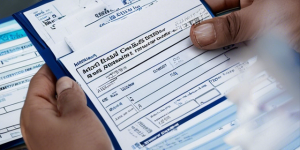
Your credit score is a numerical representation of your creditworthiness, calculated based on various factors, including payment history, outstanding balances, and credit mix. When it comes to medical debt, the impact on your credit score can be significant and far-reaching.
Unpaid Medical Bills and Credit Reporting
In most cases, medical providers and collection agencies have the right to report unpaid medical bills to the major credit bureaus (Experian, Equifax, and TransUnion) after a certain period of delinquency, typically 180 days or more. Once reported, these unpaid debts can appear on your credit report, potentially damaging your credit score.
The Domino Effect on Credit Utilization
As medical bills accumulate, they can quickly consume a significant portion of your available credit, leading to a high credit utilization ratio. This ratio, which compares your outstanding balances to your overall credit limit, is a crucial factor in determining your credit score. A high credit utilization ratio can severely impact your credit score, making it more difficult to secure new credit or favorable interest rates.
The Lasting Impact of Collection Accounts
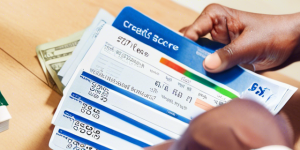
If your medical debt is sent to collections, the negative impact on your credit score can be even more severe. Collection accounts are viewed as significant derogatory marks by credit scoring models, and their presence can drastically lower your credit score. Furthermore, these collection accounts can remain on your credit report for up to seven years, prolonging the negative impact on your creditworthiness.
Strategies to Mitigate the Impact of Medical Debt
While the consequences of medical debt on your credit score can be daunting, there are strategies you can employ to minimize the damage and protect your financial future.
Negotiate Payment Plans with Healthcare Providers
Before your medical debt is reported to credit bureaus or sent to collections, you have an opportunity to negotiate payment plans with your healthcare providers. Many providers are willing to work with patients to establish manageable payment arrangements, often interest-free, to help them avoid the negative impact on their credit scores.
Utilize Medical Billing Advocates or Patient Advocates
Navigating the complex world of medical billing can be overwhelming, especially when faced with unexpected costs or confusing insurance coverage. In these situations, consider enlisting the help of a medical billing advocate or patient advocate. These professionals can review your bills, identify errors or overcharges, and negotiate with healthcare providers on your behalf, potentially reducing the overall financial burden.
Explore Medical Debt Consolidation Options

If your medical debt has already been reported to credit bureaus or sent to collections, you may want to explore debt consolidation options. This can involve taking out a personal loan or using a balance transfer credit card to consolidate your medical debts into a single monthly payment, potentially at a lower interest rate. However, it’s crucial to ensure that you have a realistic plan in place to repay the consolidated debt, as missed payments can further damage your credit score.
Dispute Inaccurate Medical Debt Entries
In some cases, medical debt entries on your credit report may be inaccurate or outdated. By carefully reviewing your credit reports from all three major bureaus, you can identify and dispute any errors or discrepancies. This process, known as credit repair, can help remove inaccurate or unverifiable information, potentially improving your credit score.
Consider Credit Counseling or Debt Management Plans
If your medical debt is overwhelming and you’re struggling to manage it on your own, seeking the guidance of a reputable credit counseling agency or enrolling in a debt management plan can provide valuable support. These organizations can negotiate with your creditors, including healthcare providers and collection agencies, to reduce interest rates and establish manageable payment plans, helping you regain control over your finances and protect your credit score.
Understand the Credit Reporting Practices
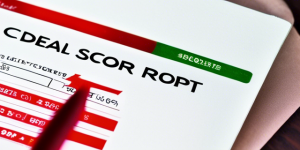
It’s important to note that the credit reporting practices for medical debt have been evolving in recent years. In an effort to minimize the impact of medical debt on credit scores, the three major credit bureaus have implemented policies that require healthcare providers and collection agencies to wait a minimum of 180 days before reporting unpaid medical bills. This grace period aims to provide consumers with more time to resolve billing issues or establish payment plans before their credit scores are affected.
The Path to Financial Recovery
While the impact of medical debt on your credit score can be significant, it’s essential to remember that this challenge is not insurmountable. By taking proactive steps, seeking professional guidance, and developing a comprehensive debt management strategy, you can mitigate the damage and pave the way for financial recovery.
Prioritize Debt Repayment
Once you’ve addressed your immediate medical debt concerns, it’s crucial to prioritize the repayment of any remaining outstanding balances. Consistently making on-time payments, even if they are minimum payments, can help rebuild your credit score over time and demonstrate your commitment to financial responsibility.
Monitor Your Credit Reports Regularly
Regularly monitoring your credit reports from all three major bureaus can help you stay informed about any changes or updates related to your medical debt. This practice can also alert you to potential errors or inaccuracies that may require disputing, further protecting your creditworthiness.
Rebuild Your Credit Profile
As you work towards resolving your medical debt, it’s also important to focus on rebuilding your overall credit profile. This can involve strategies such as becoming an authorized user on another person’s credit card, opening a secured credit card, or maintaining a mix of different types of credit accounts. By diversifying your credit history and demonstrating responsible credit management, you can gradually improve your credit score and regain access to more favorable lending opportunities.
Conclusion
The impact of medical debt on credit scores is a complex and often overwhelming challenge, but with the right strategies and a commitment to financial responsibility, it is a battle that can be won. By understanding the nuances of credit reporting practices, exploring debt consolidation options, and seeking professional guidance when needed, you can mitigate the damage and pave the way towards a brighter financial future.
Remember, your credit score is not a static number; it is a dynamic reflection of your financial habits and decisions. By taking proactive steps to address your medical debt and rebuild your credit profile, you can regain control over your financial well-being and unlock new opportunities for personal and professional growth.
FAQs
1. How long does medical debt stay on my credit report?
Medical debt can remain on your credit report for up to seven years from the date it was first reported as delinquent or sent to collections. However, under recent changes, medical debt that has been paid off or included in a payment plan should be removed from your credit report.
2. Can I negotiate with collection agencies to remove medical debt from my credit report?
In some cases, it may be possible to negotiate with collection agencies to remove medical debt from your credit report after it has been paid or settled. This process, known as “pay for deletion,” involves requesting the removal of the negative entry as part of the settlement agreement. However, creditors and collection agencies are not obligated to comply with these requests.
3. How much can medical debt impact my credit score?
The impact of medical debt on your credit score can vary depending on several factors, including the amount of debt, the length of delinquency, and your overall credit history. Generally, larger amounts of medical debt and longer delinquency periods can have a more significant negative impact on your credit score.
4. Can I dispute medical debt on my credit report if I believe it was incorrectly reported?
Yes, you have the right to dispute any inaccurate or unverifiable information on your credit report, including medical debt entries. If you believe that a medical debt was reported incorrectly or is not yours, you can file a dispute with the credit bureaus, providing supporting documentation to substantiate your claim.
5. Should I pay off medical debt before other types of debt?
There is no one-size-fits-all answer to this question, as the priority of debt repayment depends on your individual financial situation and goals. Generally, it’s recommended to prioritize debts with the highest interest rates or those that pose the most significant risk to your credit score, such as delinquent accounts or collections. However, if medical debt is threatening legal action or wage garnishment, it may be wise to address it promptly.
]]>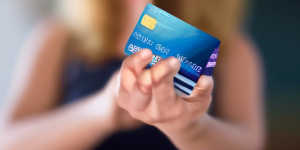
In the ever-evolving landscape of personal finance, debt consolidation has emerged as a popular strategy for managing overwhelming debt. However, for those with low credit scores, the path to consolidation can seem like a daunting maze. Fear not, because in this comprehensive guide, we’ll navigate through the various options available, empowering you to take control of your finances and pave the way towards a debt-free future.
Understanding the Impact of Low Credit Scores
Before we dive into the consolidation options, let’s address the elephant in the room: low credit scores. A low credit score can be a significant barrier when seeking financial assistance, as lenders often perceive individuals with poor credit as high-risk borrowers. This perception can result in higher interest rates, stricter terms, or even outright denial of credit.
However, it’s crucial to remember that a low credit score is not a permanent condition. By implementing sound financial practices and exploring the right consolidation options, you can gradually improve your credit score and unlock more favorable lending opportunities.
Option 1: Peer-to-Peer Lending Platforms

In the digital age, peer-to-peer (P2P) lending platforms have emerged as a viable alternative to traditional banking institutions. These online platforms connect borrowers with individual investors willing to fund their loans. While credit scores are still a consideration, P2P lenders often take a more holistic approach to evaluating borrowers, considering factors such as income, employment history, and debt-to-income ratio.
Popular P2P lending platforms include:
One of the advantages of P2P lending is the potential for lower interest rates compared to traditional personal loans or credit cards, especially for borrowers with less-than-perfect credit scores.
Option 2: Credit Union Debt Consolidation Loans
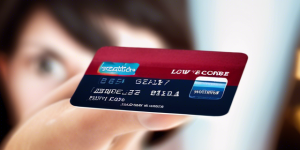
Credit unions are member-owned, not-for-profit financial institutions that often offer more flexible lending criteria and competitive interest rates. Unlike traditional banks, credit unions may be more willing to consider applicants with low credit scores, particularly if they are existing members with a positive history.
When exploring credit union debt consolidation loans, be prepared to provide detailed information about your financial situation, including income, expenses, and a plan for repayment. Many credit unions also offer credit counseling services to help members develop a comprehensive debt management strategy.
Option 3: Secured Debt Consolidation Loans
If your credit score is particularly low, you may need to consider secured debt consolidation loans. These loans require collateral, such as a vehicle, home equity, or other valuable assets, to secure the loan. By putting up collateral, you demonstrate a higher level of commitment and reduce the lender’s risk, potentially increasing your chances of approval.
However, it’s essential to approach secured loans with caution, as failing to make timely payments could result in the loss of your collateral. Thoroughly evaluate your ability to repay the loan before risking valuable assets.
Option 4: Debt Management Plans

For individuals struggling with multiple credit card debts, a debt management plan (DMP) offered by a reputable credit counseling agency can provide a structured path to consolidation. These agencies negotiate with your creditors to reduce interest rates and establish a single monthly payment plan.
While enrolling in a DMP can initially impact your credit score, making consistent on-time payments can gradually improve your credit over time. Additionally, many creditors view participation in a DMP as a positive sign of commitment to repaying debt.
When considering a DMP, research agencies accredited by organizations such as the National Foundation for Credit Counseling (NFCC) or the Financial Counseling Association of America (FCAA).
Option 5: Debt Settlement Programs
Debt settlement programs involve negotiating with creditors to accept a lump sum payment that is less than the total amount owed. While this option can provide significant debt relief, it comes with several caveats.
First, debt settlement can have a severe negative impact on your credit score, as you’ll essentially be defaulting on your debts before the settlement is reached. Additionally, the forgiven debt may be considered taxable income by the IRS, potentially resulting in an unexpected tax bill.
If you decide to pursue debt settlement, exercise caution and carefully research reputable firms with a proven track record. Avoid companies that make unrealistic promises or charge excessive upfront fees.
Option 6: Borrowing from Retirement Accounts

In situations of dire financial need, some individuals may consider borrowing from their retirement accounts, such as 401(k)s or IRAs, to consolidate debt. This option allows you to access funds without incurring additional debt or undergoing a credit check.
However, borrowing from retirement accounts should be a last resort, as it can significantly impact your long-term financial security. Early withdrawals may also incur penalties and taxes, further diminishing your retirement savings.
If you choose to explore this option, consult with a financial advisor to fully understand the implications and develop a solid repayment plan.
Option 7: Home Equity Loans or Lines of Credit
For homeowners with sufficient equity, a home equity loan or line of credit (HELOC) can provide access to funds for debt consolidation. These loans use your home as collateral, potentially offering lower interest rates than unsecured personal loans or credit cards.
However, it’s crucial to remember that by using your home as collateral, you’re putting it at risk if you fail to make timely payments. Additionally, the interest paid on home equity loans or HELOCs may not be tax-deductible under the current tax laws.
Before pursuing this option, carefully evaluate your ability to repay the loan and consider the potential impact on your long-term financial goals.
Option 8: Debt Consolidation Credit Cards
If your credit score falls within the fair or good range, you may be eligible for a debt consolidation credit card. These cards often offer promotional 0% APR periods, allowing you to transfer outstanding balances from multiple accounts and pay them off interest-free for a set duration, typically 12-18 months.
To maximize the benefits of a debt consolidation credit card, it’s essential to have a plan in place to pay off the entire balance before the promotional period ends. Additionally, avoid using the card for new purchases, as this can quickly negate the interest savings.
When comparing consolidation credit card offers, pay close attention to balance transfer fees, annual fees, and the regular APR that will apply after the promotional period.
Option 9: Personal Loans from Online Lenders
In recent years, online lenders have emerged as a competitive alternative to traditional banks, offering personal loans with less stringent credit requirements. While interest rates may be higher for borrowers with low credit scores, these lenders often provide faster approval processes and more flexible repayment terms.
When exploring online personal loan options, be sure to research the lender’s reputation, read customer reviews, and carefully evaluate the terms and conditions. Look for lenders that offer transparent pricing, no hidden fees, and flexible repayment schedules.
Option 10: Seek Professional Guidance
Navigating the world of debt consolidation with a low credit score can be overwhelming, especially when faced with a multitude of options and complex financial terminology. In such situations, seeking guidance from a trusted financial advisor or credit counselor can be invaluable.
These professionals can provide personalized advice tailored to your unique financial situation, helping you evaluate the pros and cons of various consolidation options and develop a comprehensive debt management strategy.
When selecting a financial advisor or credit counselor, look for credentials from accredited organizations, such as the Certified Financial Planner Board of Standards (CFP Board) or the National Foundation for Credit Counseling (NFCC).
Conclusion: Exploring Consolidation Options for Low Credit Scores 2024
Consolidating debt with a low credit score may seem like an uphill battle, but with perseverance and the right strategies, you can overcome this challenge and regain control over your financial future. The key lies in exploring all available options, carefully evaluating the terms and conditions, and developing a realistic repayment plan that aligns with your goals and circumstances.
Remember, a low credit score is not a permanent condition, and by consistently practicing sound financial habits and making timely payments, you can gradually improve your credit standing and unlock more favorable consolidation opportunities in the future.
The journey towards debt freedom may be long and arduous, but the rewards of financial stability and peace of mind are well worth the effort. Embrace the consolidation option that best suits your needs, remain disciplined in your repayment strategy, and celebrate each milestone along the way.
FAQs: Exploring Consolidation Options for Low Credit Scores 2024
1. Will consolidating my debt negatively impact my credit score?
The impact on your credit score depends on the consolidation method you choose. Some options, such as debt settlement or opening a new credit account, may initially cause a temporary dip in your score. However, making consistent on-time payments can gradually improve your credit over time.
2. Can I consolidate my debt if I have a bankruptcy on my credit report?
While a bankruptcy can significantly impact your credit score and make it more challenging to secure consolidation loans, it is still possible to explore options such as debt management plans or secured loans. However, you may face higher interest rates or stricter terms.
3. How long does it take to improve my credit score after consolidating debt?
The timeline for improving your credit score after consolidating debt varies based on several factors, including your payment history, credit utilization, and the age of your credit accounts. Generally, you can expect to see gradual improvements within 6-12 months of consistent on-time payments.
4. Can I consolidate student loan debt with other types of debt?
While it is possible to consolidate student loan debt with other types of debt, such as credit card or personal loan balances, it is generally not recommended. Student loans often have unique repayment terms and forgiveness options that may be lost if consolidated with other debt.
5. What happens if I miss payments on my consolidated debt?
Missing payments on your consolidated debt can have serious consequences, including late fees, penalty interest rates, and negative impacts on your credit score. It can also potentially lead to default and collection actions by the lender. Prioritize making timely payments to avoid these setbacks and maintain progress toward becoming debt-free.
]]>
As the cost of higher education continues to soar, an increasing number of students find themselves grappling with the burden of student loan debt. This financial obligation can cast a long shadow over your future, making it essential to develop a comprehensive strategy for managing and eventually eliminating your student loans. In this comprehensive guide, we’ll explore proven tactics and valuable insights to help you navigate the complex world of student loan debt effectively.
Understanding the Gravity of Student Loan Debt

Before we delve into the strategies, let’s take a moment to appreciate the gravity of the situation. Student loan debt in the United States has surpassed a staggering $1.7 trillion, with the average borrower owing around $30,000 upon graduation. This debt can have far-reaching implications, impacting your ability to achieve major life milestones, such as buying a home, starting a family, or even pursuing your desired career path.
However, it’s crucial to remember that student loan debt is not a life sentence. With the right mindset, discipline, and strategic approach, you can conquer this financial challenge and pave the way for a brighter future.
Strategy 1: Know Your Loans Inside and Out
The first step in managing your student loan debt effectively is to develop a comprehensive understanding of your loans. Gather all the necessary information, including:
- Loan types (federal or private)
- Interest rates
- Current balances
- Repayment terms
- Grace periods
Familiarizing yourself with the specifics of each loan will enable you to make informed decisions and develop a tailored repayment plan. Don’t hesitate to reach out to your loan servicers for clarification or additional information.
Strategy 2: Explore Income-Driven Repayment Plans

For those struggling with high monthly payments, income-driven repayment plans can provide much-needed relief. These plans, offered by the federal government, allow you to cap your monthly payments at a percentage of your discretionary income, making it more manageable to stay current on your loans.
Some popular income-driven repayment plans include:
- Income-Based Repayment (IBR)
- Income-Contingent Repayment (ICR)
- Pay As You Earn (PAYE)
- Revised Pay As You Earn (REPAYE)
While these plans can extend your repayment period, they offer the potential for loan forgiveness after a specified period, typically 20-25 years of consistent payments.
Strategy 3: Embrace the Power of Autopay
Automating your student loan payments can be a game-changer in your debt management journey. By setting up automatic payments, you eliminate the risk of missing due dates and incurring late fees or damaging your credit score. Many lenders even offer a small interest rate reduction as an incentive for enrolling in autopay.
However, it’s essential to ensure that you have sufficient funds in your account to cover the automatic payments. Set up reminders or notifications to monitor your balance and avoid potential overdraft fees.
Strategy 4: Prioritize High-Interest Loans
If you have multiple student loans with varying interest rates, it’s generally advisable to prioritize the repayment of the highest-interest loans first. This approach, known as the “debt avalanche” method, can save you a significant amount of money in the long run by minimizing the amount of interest you’ll pay over the life of the loans.
To implement this strategy, follow these steps:
- List all your student loans from highest to lowest interest rate.
- Make minimum payments on all loans except the one with the highest interest rate.
- Allocate any additional funds toward the highest-interest loan.
- Once the highest-interest loan is paid off, roll over the payment amount to the next highest-interest loan.
- Repeat the process until all loans are eliminated.
This method requires discipline and consistency, but the potential savings make it well worth the effort.
Strategy 5: Explore Loan Consolidation and Refinancing

Consolidating your student loans can simplify your repayment process by combining multiple loans into a single payment. This approach can also provide the opportunity to extend your repayment term, potentially lowering your monthly payments.
Alternatively, refinancing your student loans through a private lender can potentially secure a lower interest rate, especially if your credit score and income have improved since you initially took out the loans.
When considering consolidation or refinancing, be sure to weigh the pros and cons carefully. While these options can offer immediate relief, they may also result in the loss of certain borrower protections or loan forgiveness opportunities.
Strategy 6: Leverage Employer Assistance Programs
Many employers recognize the burden of student loan debt and have implemented assistance programs to support their employees. These programs can take various forms, such as:
- Student loan repayment assistance
- Tuition reimbursement
- Loan forgiveness incentives
Be proactive in researching your employer’s offerings and taking advantage of any available benefits. These programs can significantly alleviate the financial strain of student loan debt and accelerate your path to becoming debt-free.
Strategy 7: Explore Student Loan Forgiveness Programs
Depending on your career path and employment situation, you may be eligible for various student loan forgiveness programs. These programs can provide partial or complete forgiveness of your remaining loan balances after meeting specific service or employment requirements.
Some popular student loan forgiveness programs include:
- Public Service Loan Forgiveness (PSLF)
- Teacher Loan Forgiveness
- Income-Driven Repayment (IDR) Forgiveness
- Military College Loan Repayment Program (CLRP)
Carefully research the eligibility criteria and follow the application processes to take advantage of these potentially life-changing opportunities.
Strategy 8: Increase Your Income Streams
While cutting expenses is a crucial aspect of debt management, increasing your income can also significantly accelerate your repayment progress. Consider exploring side hustles, freelance work, or even starting a small business to generate additional income streams.
Allocate a portion of your extra earnings specifically toward your student loan payments, treating it as a priority expense. This proactive approach can help you chip away at your debt more quickly and potentially shave years off your repayment timeline.
Strategy 9: Seek Support and Accountability
Managing student loan debt can be an emotionally and mentally challenging journey. Don’t hesitate to seek support from trusted friends, family members, or professional counselors who can provide encouragement and accountability.
Consider joining online communities or support groups where you can connect with others facing similar struggles. Sharing experiences and strategies can not only provide emotional support but also valuable insights and practical tips for navigating the complexities of student loan debt.
Strategy 10: Stay Motivated and Celebrate Milestones
Paying off student loan debt is a marathon, not a sprint. It’s essential to stay motivated throughout the process and celebrate milestones along the way. Whether it’s paying off a particular loan, reaching a specific debt reduction milestone, or achieving a significant credit score improvement, take the time to acknowledge your progress and reward yourself (within reason, of course).
Visualize your debt-free future and remind yourself of the long-term benefits of your efforts, such as increased financial freedom, improved credit scores, and the ability to pursue other life goals without the burden of student loan debt weighing you down.
Conclusion
Managing student loan debt is a formidable challenge, but with the right strategies and unwavering determination, it is a battle that can be won. By implementing the tactics outlined in this guide, you’ll be well-equipped to take control of your financial situation and make steady progress toward a debt-free future.
Remember, the journey may be long and arduous, but the rewards of financial freedom and the sense of accomplishment that comes with conquering your student loan debt are well worth the effort. Stay focused, stay motivated, and embrace the power of strategic debt management to pave the way for a brighter, more financially secure tomorrow.
FAQs: Conquering Student Loan Debt 2024
1. Can I pause my student loan payments temporarily?
Yes, there are options to temporarily pause or reduce your student loan payments, such as deferment or forbearance. However, these options should be used judiciously, as interest may continue to accrue during the pause period, potentially increasing your overall debt.
2. How does student loan debt affect my credit score?
Student loan debt can have a significant impact on your credit score, both positively and negatively. Making consistent, on-time payments can help improve your credit score over time, while missed payments or defaulting on your loans can severely damage your credit.
3. Can I negotiate a lower interest rate on my student loans?
It is generally difficult to negotiate lower interest rates on federal student loans. However, if you have private student loans, you may be able to negotiate a lower rate with your lender, especially if your credit score and income have improved significantly since taking out the loans.
4. What happens if I default on my student loans?
Defaulting on your student loans can have severe consequences, including wage garnishment, tax refund interception, and damage to your credit score. It can also make you ineligible for additional federal student aid and loan forgiveness programs. If you’re struggling to make payments, explore alternative repayment options before defaulting.
5. How long does it typically take to pay off student loan debt?
The timeline for paying off student loan debt varies greatly depending on factors such as the total amount owed, interest rates, repayment plan, and your income. On average, it can take anywhere from 10 to 30 years to pay off student loan debt, with some borrowers taking even longer.
]]>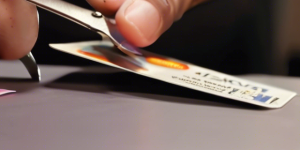
Drowning in credit card debt can feel like an overwhelming burden, leaving you trapped in a never-ending cycle of minimum payments and mounting interest charges. However, with the right strategies and a commitment to financial discipline, you can break free from the shackles of credit card debt and regain control over your finances. In this comprehensive guide, we’ll explore the best strategies for reducing credit card debt, empowering you to take charge of your financial future.
Understanding the Root Causes of Credit Card Debt
Before we dive into the strategies, it’s crucial to understand the root causes of credit card debt. More often than not, excessive spending, unexpected emergencies, or a lack of financial management skills contribute to the accumulation of debt. By identifying and addressing these underlying factors, you can prevent future debt from spiraling out of control.
Strategy 1: The Debt Snowball Method
The debt snowball method, popularized by financial guru Dave Ramsey, is a psychological approach that focuses on paying off your smallest debt first. Here’s how it works:
- List all your debts from smallest to largest, regardless of interest rates.
- Make minimum payments on all debts except the smallest one.
- Allocate as much money as possible toward the smallest debt until it’s paid off.
- Once the smallest debt is eliminated, roll over the payment amount to the next smallest debt.
- Repeat the process until all debts are paid off.
This method provides a sense of accomplishment as you quickly eliminate smaller debts, building momentum and motivation to tackle the larger ones.
Strategy 2: The Debt Avalanche Method

The debt avalanche method is a more mathematical approach that focuses on paying off the debt with the highest interest rate first. By targeting the most expensive debt, you can save significantly on interest charges in the long run. Here’s how it works:
- List all your debts from highest to lowest interest rate.
- Make minimum payments on all debts except the one with the highest interest rate.
- Allocate as much money as possible toward the debt with the highest interest rate.
- Once the highest-interest debt is paid off, roll over the payment amount to the next highest-interest debt.
- Repeat the process until all debts are eliminated.
While this method may not provide the same psychological boost as the debt snowball, it can save you more money in interest charges over time.
Strategy 3: Balance Transfer to a Low-Interest Credit Card
If you have good credit, you may be able to transfer your high-interest credit card balances to a new card with a low introductory interest rate. This strategy can provide temporary relief from high interest charges, giving you breathing room to pay down the principal faster.
When considering a balance transfer, look for cards with:
- 0% introductory APR for at least 12-18 months
- Low or no balance transfer fees
- A plan to pay off the entire balance before the introductory period ends
It’s important to note that you should avoid using the new card for additional purchases, as this can derail your debt repayment plan.
Strategy 4: Debt Consolidation Loan
A debt consolidation loan allows you to combine multiple credit card balances into a single, fixed-rate loan. This strategy can simplify your payments and potentially lower your overall interest rate, making it easier to manage your debt repayment.
When considering a debt consolidation loan, research lenders that offer:
- Fixed interest rates lower than your current credit card rates
- Reasonable loan terms (typically 3-5 years)
- No prepayment penalties, allowing you to pay off the loan early
Be cautious of companies offering debt consolidation services that require upfront fees or have hidden costs, as these can further exacerbate your financial situation.
Strategy 5: Negotiate with Credit Card Companies
In some cases, you may be able to negotiate with your credit card companies for lower interest rates or more favorable repayment terms. This approach can be particularly effective if you’ve experienced a financial hardship or have a strong history of on-time payments.
When negotiating with credit card companies, consider the following tips:
- Be honest about your financial situation and express your willingness to pay.
- Request a lower interest rate or a temporary interest rate reduction.
- Ask for a waiver or reduction of late fees or over-limit charges.
- Propose a realistic repayment plan that fits your budget.
- Get any agreements in writing before making payments.
Remember, credit card companies are often willing to work with customers who demonstrate a genuine commitment to repaying their debts.
Strategy 6: Seek Professional Help
If your credit card debt has become overwhelming and you’re struggling to manage it on your own, consider seeking professional help. Credit counseling agencies and nonprofit debt management organizations can provide valuable guidance and assistance in developing a personalized debt repayment plan.
When seeking professional help, look for organizations that:
- Are accredited and have a good reputation
- Offer free or low-cost initial consultations
- Provide a range of services, including budgeting advice and debt management plans
- Have certified and experienced counselors
Be wary of for-profit debt settlement companies that make promises that seem too good to be true, as these can often lead to more financial harm in the long run.
Implementing a Comprehensive Approach

While each of these strategies can be effective on its own, combining multiple approaches can accelerate your debt repayment progress. For example, you could utilize a balance transfer to a low-interest credit card while simultaneously implementing the debt snowball or avalanche method.
Additionally, it’s crucial to adopt a lifestyle of financial discipline by:
- Creating a realistic budget and sticking to it
- Reducing unnecessary expenses and cutting back on discretionary spending
- Increasing your income through side hustles or freelance work
- Building an emergency fund to avoid relying on credit cards for unexpected expenses
By taking a comprehensive approach and committing to long-term financial discipline, you can not only eliminate your credit card debt but also establish a solid foundation for a debt-free future.
Conclusion
Reducing credit card debt requires a combination of strategy, discipline, and perseverance. By implementing the strategies outlined in this guide, you can regain control over your finances and break free from the burden of credit card debt. Remember, the journey may be challenging, but the reward of financial freedom is well worth the effort. Stay focused, stay motivated, and celebrate each milestone along the way.
FAQs
1. What’s the difference between the debt snowball and debt avalanche methods?
The debt snowball method focuses on paying off debts from smallest to largest, regardless of interest rates, providing psychological motivation. The debt avalanche method targets debts with the highest interest rates first, potentially saving more money on interest charges in the long run.
2. Should I close my credit card accounts after paying them off?
It’s generally advisable to keep your oldest credit card accounts open, as closing them can negatively impact your credit score by reducing your credit history and available credit. However, consider closing newer accounts or those with high annual fees.
3. Can I negotiate with credit card companies myself, or do I need a professional?
You can certainly try to negotiate with credit card companies yourself, especially if you have a good payment history and can clearly explain your financial situation. However, if you’re struggling to make progress or feel overwhelmed, seeking professional help from a credit counseling agency can be beneficial.
4. How long does it typically take to pay off credit card debt?
The timeline for paying off credit card debt depends on various factors, such as the total amount owed, interest rates, and the amount you can allocate toward payments each month. With discipline and a solid repayment plan, it’s possible to become debt-free within 3-5 years for many individuals.
5. What’s the impact of credit card debt on my credit score?
Credit card debt can negatively impact your credit score, especially if you’re carrying high balances relative to your credit limits (high credit utilization ratio). Consistently making on-time payments and reducing your outstanding balances can help improve your credit score over time.
]]>
The debt snowball method is a debt repayment strategy that focuses on paying off your smallest debt balances first before moving to larger ones. The idea is that by getting some quick “wins” and eliminating debts entirely, you build momentum that motivates you to stick with your repayment plan and ultimately become debt-free. But does it actually work better than other methods?
How the Debt Snowball Method Works
The debt snowball method has you list out all your debts from smallest balance to largest balance, ignoring interest rates. You would then:
- Make minimum payments on all debts except for the smallest balance
- Pay as much as possible on the smallest balance
- Once it’s paid off, roll the amount you were paying on that into the next smallest balance
- Repeat this process as you plow through your list until everything is paid off
The key aspect that makes this a “snowball” method is that as you pay off each balance, you begin rolling more and more money into your next target debt. Like a snowball tumbling down a hill, that money builds momentum and grows as debts get erased.
Why Start With the Smallest Debt?
Supporters of the debt snowball method argue that paying off small debts first gives you some quick “wins” on your debt repayment journey. By knocking out those first couple of tiny debts, you start building motivation that helps you stick with your strategy.
Seeing debt balances fall to zero is extremely gratifying. You also simplify your finances by reducing the number of monthly payments. All this makes your debt repayment efforts feel more manageable.
The debt snowball isn’t overly concerned with paying down the most expensive debt first. It prioritizes small psychological victories to make you feel empowered and motivated.
Compare it to the Debt Avalanche Method

The closest alternative would be the debt avalanche method. With this strategy, you list out your debts by interest rate instead, from highest to lowest. The process then works the same way:
- Make minimum payments on all debts except the one with highest interest
- Put as much money as possible towards that debt
- Repeat for each subsequent debt based on interest rate
So with avalanche, you target the most expensive debt first, paying as much as possible while making minimums on the rest. The debt snowball method has you attack the smallest balances first regardless of rates.
What Are the Pros of the Debt Snowball?
There are good reasons why the debt snowball strategy is favored by many financial experts. Let’s review some of the notable pros.
1. Psychological and Motivation Boost
As mentioned already, the satisfaction of quickly paying off smaller debts can motivate you to keep attacking your repayment plan. It gives your brain some quick “wins” and positive reinforcement that will hopefully inspire you to keep going.
If you started instead with a large 5-figure credit card balance for example, it could feel hopeless to make progress or like you aren’t getting anywhere. Even with responsible monthly payments, it could take years to erase. Tackling a few $500 or $1000 balances first counteracts this feeling.
2. Simplifies Repayment Tracking
Another advantage of debt snowball is reducing the number of monthly payments floating around. Say you start with 5 debts – knocking the two smallest balances out cuts that down to 3 monthly payments you have to track. Fewer open debts makes personal accounting much simpler.
3. Flexibility for Cash Flow Issues
If you are ever struggling one month to make the full set of debt payments, having fewer open debts gives you flexibility. You can focus that month’s available cash on the remaining balances and temporarily make minimums or reduce payments if needed to the others without increasing long term interest costs.
For example, imagine you lose a client and are short on cash for the month. If you had 8 open debts still, you may need toIncrease your credit card balances or take on expensive payday loans to cover all the payments. But if you’ve paid down to the last 2-3 debts, you can more easily direct available funds to keep tackling those without needing other debt sources to stay afloat.
4. Frees Up More Cashflow Over Time
As you pay off debts under debt snowball, the money previously put towards those monthly payments is rolled forward. This means more and more of your cashflow is directed at the next target debt each time one gets paid off.
This expanding cashflow snowball effect lets you build momentum and speeds up how fast the next debts can be repaid since you aren’t splitting money across as many open balances.
5. Don’t Necessarily Pay Way More Interest
Critics argue that ignoring interest rates with debt snowball means you pay significantly more in interest overall. However the difference may be fairly negligible, especially for consumers with decent credit and mostly moderately high interest debts.
If your annual percentage rates on credit cards and loans mostly range from 9-15%, picking the lowest balances first rather than focusing on a 12% balance over a 15% balance may not change total interest costs that much in the few years it takes to repay debts. The exact difference depends on your specific debt load though.
What Are the Cons of Debt Snowball?
Of course, no debt payoff strategy is perfect. There are some notable drawbacks and critiques to understand as well before adopting the debt snowball.
1. Not Optimized to Save on Interest Costs
The biggest criticism is that this approach is not mathematically optimized based on interest rates. By tackling the highest rate balance first under debt avalanche, you would pay debts off in a way that minimizes total interest paid over time. Debt snowball will likely cost more in interest expenses than structuring payments strictly by annual percentage rate.
Whether this has a small impact or costs someone thousands of dollars extra compared to avalanche method depends entirely on the specifics of their situation. That leads into the next point…
2. Success Highly Dependent on Individual Psychology
There are many mathematical models showing debt avalanche saves more money over time compared to debt snowball. However, these analyses ignore human psychology and behavior factors. Research shows that people struggling with debt often lack motivation and struggle to stick to repayment plans.
The argument for debt snowball is that the psychological boost of quick wins pays off by inspiring continued dedication to becoming debt free. Someone may pay an extra few hundred in interest but actually succeed in wiping out all debts. Whereas someone purely focused on rates might save money in models but then fail to stick to their strategy and end up defaulting or taking longer to repay.
For some personalities, debt snowball is more about optimizing the human than the math. So this method really depends on how much those psychological victories can push you.
3. Potential Prepayment Penalties
One financial danger to note is that certain debts like mortgages or auto loans can charge penalties if you pay them off too early. By structuring debt snowball so theseballoon payment loans get tackled first in the queue, you may trigger fees that actually lose you money compared to other strategies.
It takes a bit more research and planning to avoid these prepayment penalties if wanting to optimize debt snowball’s balance wiping momentum.
4. Credit Score Benefits Questionable
Some assume that rapidly eliminating debts under debt snowball must be fantastic for your credit score. However, credit scoring algorithms do not place extra value on getting rid of accounts entirely and often benefit from keeping longstanding accounts open.
Unless eliminating a small debt lets you seriously reduce utilization % across your remaining mix of debts, credit score impact may be neutral. Scores weigh factors like payment history and credit mix, not just total debts paid off.
5. Risk of Backsliding on Progress
Lastly, there is psychology risk of undoing your debt snowball progress. As you pay off a couple small debts and your monthly cash flow improves, lifestyle inflation can sneak back in. You may redevelop appetites to overspend that then saddle you with new debts erasing the progress from your paid off balances.
Who Is Debt Snowball Best Suited For?
While there are some cons like above to weigh, the debt snowball system does have merit – when matched properly to someone’s financial personality and situation. So what are good candidate profiles?
- People that struggle with budgets/plans and need wins
- Those with lots of small debts below $5-10k
- People with debts largely in same moderate rate range already
- Primarily fixed rate installment debt like student loans
- Personalities requiring visible results to stay motivated
If you relate to several of those – try out the debt snowball! Having 5 student loans from $2-7k would be perfect example. Knocking a couple of the tiniest ones out gives you results while rate differences are minor.
Just be sure you don’t have major high interest credit card or payday loan debt in the mix driving up rates. And watch that you don’t overspend and backslide once the early wins boost your cash flow as debts start disappearing.
How Do You Execute the Debt Snowball Effectively?
Convinced this is the right repayment strategy for your debt load and mentality? Here are key steps to implement an effective snowball plan:
1. List Debts Smallest to Largest Balance
Grab all your debt statements and compile everything into one master list, ignoring interest rates. That means putting the $500 credit card first and $8000 student loan last, even if the credit card charges 20%. List just the balances due, not monthly payments.
2, Calculate Total Minimum Payments
Tally up minimum payments across all debts for an absolute baseline you have to hit each month. This ensures no accounts default or get behind on payments as you attacksmallest balances.
3. Figure Out How Much Extra Cashflow Exists
Make a monthly budget if you don’t already have one to accurately account for all necessary living expenses. Any money left is the extra debt snowball cash flow you have for tackling the first target balance.
4. Pay Minimums on All But Smallest Balance
Take that available extra monthly cash and put it entirely toward your first small balance account while just paying minimums on the rest. Ignore interest differences at this point and focus solely on wiping out the smallest dollars first.
5. Repeat Snowball Ramp for Next Debt
As soon as your smallest balance hits zero, roll that monthly payment money into the next smallest balanceon your list. For example, if the first debt payment was $75 per month, you now have an extra $75 to put towards debt #2 ontop of existing available payment cash.
6, Continue Until All Debts Are Gone
Keep following this pattern of full extra payments on the current smallest balance debt and minimums on the rest as you plow through your list. Each erased balance increases payments to the next one. Once all debts are gone, do a happy dance and start building savings!
Tips to Maximize Debt Snowball Success
Heeding this general framework can produce great results. But you may need some additional strategies or tools to help you execute it smoothly or stick to the plan. Here are pro tips:
- Automate payments and increases wherever possible so you easily sustain snowball without much effort as debts decrease
- Use spreadsheet trackers or debt payoff apps to monitor progress which enhances motivation
- Establish strict spending rules once initial debts are repaid to prevent new balances from sabotaging your snowball
- Strategically wield balance transfer offers with low promotional rates to accelerate payoff speed of higher rate debts as progress allows
- Pair extra principle payments with biweekly mortgage payments rather than monthly to build faster equity snowball ontop of normal debts
- Plug one-off cash windfalls like bonuses or tax refunds toward current snowball balance target to speed up timeline
- Celebrate each milestone as you cross out debts with a small splurge without going overboard creating new balances
Creating a Debt Snowball Calculator
For hands-on tracking and planning, creating your own customizable debt snowball calculator in a spreadsheet is extremely helpful. This lets you model out projections for each target debt balance based on your cash flow and when it can be erased.
Here is an example template you can copy showing the key columns and formulas to leverage:
| Balance | Interest Rate | Min Payment | Extra Payment | Total Payment | Months to Payoff |
|---|---|---|---|---|---|
| $2000 | 15% | $50 | $100 | =B3+E3 | =B2/(D2+E2) |
Populating Expected Payoff Date and then Tracking Actual Payoff Date as you progress provides another layer of modeling and satisfaction from crossing out debts on schedule or early.
There are also free debt snowball calculator templates and paid apps/tools online providing these tracking functionalities if you don’t want to build your own spreadsheet version.
When to Use Snowball Calculator Projections
Beyond the baseline motivation tracking, having target payoff dates in your calculator enables strategic planning if life throws surprises at your repayment efforts. For example:
- Model delays if temporary job loss forced you to reduce extra payment months
- See impact of injecting a tax refund or bonus to accelerate goals
- Decide if balance transfer makes sense for high rate debts
- Shift payments if risk missing a payoff target
Carefully crafted Excel models keep you masterfully working your debt snowball!
Finding the Money to Feed Your Debt Snowballs

Of course, all this strategy means little without cash flow to actually fund attacking your debts. Beyond bare minimum payments, where can you find extra monthly money to chip away at balances?
Increasing Income
First prize is bringing home bigger paychecks. Options range from:
- Negotiating a raise/promotion at work
- Finding a higher paying job
- Taking on side gigs/freelance in your expertise area
- Starting a small business that takes off
- Monetizing a hobby with crafts, services, self-publishing books/courses etc.
The key is picking income streams fitting your unique skills, interests and experience. Find friends and mentors thriving financially to brainstorm ideas.
Cut Expenses Without Living Miserable
If income jumps aren’t feasible, examining spending trims might redirect cash towards debts:
- Downsize housing to rent below your means
- Slash subscriptions and memberships no longer used
- Cook more meals at home rather than eating out
- Find cheaper insurance policies as policies renew
- Reduce utility bills with conservative usage and efficient appliances
- Write down every expense and category for a month to identify waste
- Cull impulse shopping and establish decision timeout rules
With an entire family budget blueprint in hand, there may be hundreds of dollars to divert towards debts without feeling deprived.
Balance Transfer Strategic Credit Leveraging
If already maximizing income flows and trimming costs with nothing more to cut, balance transfer credit cards effectively tap debt to crush debt. This takes advantage of low introductory rates.
The key is not increasing your net debt while doing so and having a plan to aggressively pay off the balance before rates spike at the end of promotional periods. Do so judiciously only once establishing a solid repayment foundation on earlier debts.
Used correctly however, zero percent transfers can provide the nitrous oxide boosting your debt snowball momentum!
Tracking Your Debt Snowball Progress Over Time
As previously mentioned, diligently monitoring your snowball method results is vital for staying motivated. Beyond the raw numeric tracking, also consider posting:
- Copies of debt payoff confirmation letters
- Screenshots of your debt dashboard as balances reach $0
- Pictures/gifs of you doing a “debt freedom” happy dance
- Rewards you gift yourself for milestone achievements
Physically seeing the outputs of your efforts hit home much more emotionally. Find whatever visual storytelling elements keep you pumped to stick to the repayment roadmap when temptation or frustration hits.
Also leverage apps like Debt Payoff Planner, Debt Free, Debt Destroyer, Digit, or Trello to track debts across nice interfaces and stay on your game. Gamify the journey!
Course Correcting Your Debt Snowball Plan
On the flip side, your debt tracking may reveal setbacks impeding hoped for timelines:
Perhaps you realize:
- Interest rates are swelling faster than projected on variable debts
- You unexpectedly needed to cashflow urgent car repairs
- Minimum payments increased thanks to rate hikes or lapsed promotional financing
- A new medical bill or family crisis expense popped up
- Your debt snowball plan relied on overtime that got cut
When facing obstacles like this, resist feeling defeated and falling off the wagon! Instead, rework your debt snowball calculations to account for the new scenario.
See how adjusting extra payments and timelines across debts gives you an updated path to progression. Having those models in place make course corrections much easier to process emotionally and strategically.
The key with any good financial plan is adapting to changing realities while keeping your eyes on the long term debt freedom prize.
When Debt Snowball May Not Work
While this strategy is tailored to spark hope and momentum for many debt strugglers, it does have some situations where it may falter:
1. Overspending Habits Out of Control
If you consistently spend way beyond your means and add new debts as fast as old ones get paid off, no repayment approach will work. Get spending and underlying money mindset issues under control first before trying to snowball debts.
Seek help from a financial therapist or coach to shift habits, perspective, and relationship with money first. Lifestyle design changes likely needed before tactical optimizations.
2. Mostly High Interest Credit Card and Payday Debt
When debt mix has lots of 20-30%+ credit card and payday loan debt, debt avalanche likely better leveraging the huge rate differences over fast balance erasure. Depends on your mental wiring still, but less chance of snowball being optimal.
3. Mortgage Significantly Higher Interest Than Other Debts
Similar to above, if your mortgage APR is much higher than other debts, skipping it to pay off smaller balances first misses big savings opportunity from accelerating home equity. Run the numbers in this case before committing to a suboptimal snowball plan.
4. Prepayment Penalty Risks on Specific Debts
Certain loan types like many mortgages, auto financing, business financing etc have fees if trying to overpay too quickly. Debt snowball maximizing extra
]]>
Paying back student loans can be a financial burden that lasts for years. With the average 2019 graduate owing over $30,000 in student debt, any help is welcome. One way to reduce your student loan costs is by deducting the interest you pay on certain federal and private student loans when filing your tax return. Utilizing this deduction can save you hundreds of dollars each year. But not everyone qualifies for the maximum student loan interest deduction, and understanding the eligibility rules is key to claiming this tax break correctly.
What is the Student Loan Interest Deduction?
The student loan interest deduction allows you to reduce your taxable income for the interest you paid in the tax year towards eligible federal and private student loans. For 2022 taxes, you can deduct up to $2,500 in student loan interest paid. While not a huge amount compared to the full loan balance, every dollar helps chip away at debt.
This deduction directly reduces your taxable income, allowing qualified taxpayers to retain more of their hard-earned money rather than owing it to Uncle Sam. The deduction is taken “above the line”, meaning you can claim it even if you don’t itemize deductions on Schedule A.
How Much Can I Potentially Deduct?
The maximum student loan interest deduction is:
- 2022 taxes – $2,500
- 2023 taxes – $2,500
So if you paid $2,800 in student loan interest in 2022, you can only deduct $2,500 of that amount. Any interest above the limit cannot be claimed.
Am I Eligible To Deduct My Student Loan Interest?
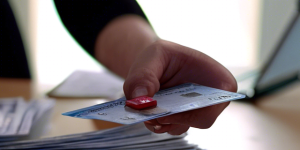
Knowing the eligibility requirements for the student loan interest deduction is crucial to avoid problems. While many people with loans seem automatically entitled to the tax break, unfavorable restrictions do exist.
Income Limits
Only taxpayers under these Modified Adjusted Gross Income (MAGI) limits can deduct student loan interest:
- 2022 taxes: $85,000 if single, $175,000 if married filing jointly
- 2023 taxes: $85,000 if single, $175,000 if married filing jointly
For example:
- Mark filed his 2022 taxes as single with a MAGI of $90,000. He is not eligible for the student loan interest deduction because his income exceeds $85,000.
- Maria filed jointly with her husband for 2022 taxes. Their MAGI is $150,000. Because their joint income falls under $175,000, Maria is eligible for the deduction.
If your MAGI surpasses the thresholds, even by one dollar (e.g. $85,001 single), you cannot claim any deduction. Consider lowering your MAGI if possible to qualify.
Qualifying Loans
Only student loans taken solely to pay qualified higher education expenses are eligible. This includes:
- Tuition and fees
- Room and board
- Books, supplies and equipment
- Other necessary expenses (transportation)
Federal student loans typically qualify, such as:
- Direct Subsidized/Unsubsidized Loans
- Parent PLUS Loans
- Graduate PLUS Loans
- Perkins Loans
- Consolidation Loans
Most private student loans also qualify. Features that determine eligibility include:
- Loaned money solely used for qualified higher education expenses
- Borrower must be legally obligated to make interest payments
- Lender cannot be a related person
- No tax-exempt private activity bonds financed the loan
The IRS provides specifics on eligible student loans. Refer to the loan document or contact your lender with questions.
How Do I Calculate And Claim The Deduction?
Claiming the student loan interest deduction involves a few key steps:
1. Determine Total Interest Paid
Add up 2022 interest payments made towards eligible federal and private student loans. This includes:
- Loan statements listing interest charged
- Form 1098-E if received from lenders
- Online account transaction histories
Tally amounts paid across multiple loans. For loans with combined principal/interest payments, request breakdowns from the lender.
Note: Only count interest actually paid in 2022, not the amount accrued.
2. Calculate Maximum Possible Deduction
Compare your total 2022 student loan interest paid from Step 1 to the $2,500 maximum deduction limit for 2022.
If greater than $2,500 – Your maximum deduction is $2,500.
If less than $2,500 – Your maximum deduction matches your interest paid.
You cannot deduct more than what you actually paid in interest or the limit if you had over $2,500.
3. Determine If You Qualify Based on Income
Review if your MAGI falls below the 2022 income limits:
- Single – $85,000
- Married Filing Jointly – $175,000
If your MAGI exceeds the thresholds even slightly, you cannot claim the deduction at all.
4. Claim Deduction on Form 1040
Form 1040 Schedule 1 is filed with your federal tax return to report adjustments to income, including the student loan interest deduction.
Line 21 of Schedule 1 is where you calculate and enter your maximum eligible deduction amount from Steps 1-3 above. This directly lowers your taxable income shown on Form 1040.
Save records proving interest payments in case the IRS audits.
5 Benefits Of The Student Loan Interest Deduction
Utilizing this adjustment helps borrowers in several ways:
1. Lowers Taxable Income
The deduction reduces your taxable income reported to the IRS. This could bump you into a lower tax bracket, saving money.
2. Allows You To Keep More Money
Less taxes owed means more funds stay in your pocket. This excess money can then pay down debt or other priorities.
3. Easy To Claim
Filing Schedule 1 is straightforward when completing annual taxes. The deduction also stays separate from itemizing.
4. Repeated Annual Savings
The deduction applies yearly to taxpayers who qualify. Interest payments often continue for a decade or longer after graduation, allowing for cumulative tax reductions.
5. Incentivizes Paying Loans
The policy motivates financially-strapped borrowers to keep chipping away at debt to realize deductions instead of defaulting. Even small wins help.
Common Questions
Still have questions about deducting your student loan interest? Here are answers to frequent inquiries:
Can I deduct interest paid on behalf of my child?
No. Only the person legally obligated to make payments on the student loan qualifies. So if you pay interest on a Parent PLUS Loan or private loan under your child’s name only they can claim the deduction.
What if loan payments are deferred?
Borrowers in deferment or forbearance who make interest-only payments can still deduct up to $2,500 of interest paid towards eligible federal or private student loans.
Can I deduct principal payments?
No, principal payments do not qualify for deductions, only interest. Paying down your overall loan balance still saves money long-term by reducing total interest costs.
Can I deduct student loan payments towards a relative’s loan?
You cannot deduct interest paid on another person’s student loans, including a spouse or child. There is no such thing as a “gift deduction.” Only the borrower legally obligated to make the loan payments can potentially claim the tax break.
How do I optimize deductions if married filing separately?
For married joint filers, consider amending returns to married filing separately status if your combined MAGI exceeds limits. This allows at least one spouse to potentially stay eligible income-wise. However, ensure the tax difference makes this switch worthwhile.
Conclusion
The student loan interest deduction allows eligible borrowers paying back federal and private student loans for higher education to reduce their tax burden. Understanding critical qualification factors like income limits, qualifying loans, and calculation steps ensures properly claiming this adjustment. Deducting up to $2,500 in interest paid can translate to significant tax savings each year. So review your eligibility and be sure to take advantage of this deduction if you qualify. Every dollar counts when paying back student debt.
]]>